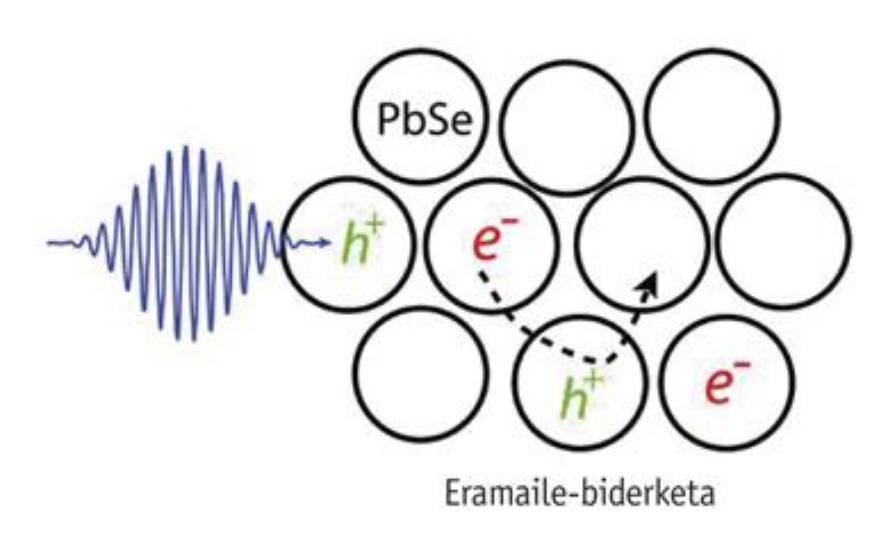Three electrons per photon
Researchers at the Dutch Delft University of Technology have invented a new material that releases three or more electrons by absorbing a photon. Conventional semiconductors release a single electron for each photon they absorb, so researchers believe the new material can improve the efficiency of photoelectric cells.
In fact, photoelectric cells release an electron for each photon they absorb. The capture of these free electrons generates an electric current that can be used as electricity. However, in this process the semiconductor loses a lot of kinetic energy in the form of heat.
To prevent the loss of this energy, researchers at Delft University have used quantum dots in a semiconductor selenium lead film. Thus they have achieved that the material is illuminated by an ultraviolet light of 400 nm of wavelength (if it is in sunlight), that a quantum point releases an electron when it absorbs a photon and that it produces the release of other electrons. This effect has been called carrier multiplication and an average of three electrons per photon is released.
According to the researchers, the next step will be the manufacture of photoelectric cells with this film. Its objective is to achieve an efficiency of 44% (normal cells have a theoretical limit of 35%). The work done to date has been published in the specialized magazine Nano Letters.






